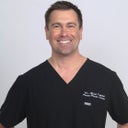Hi doctors, Can a Midfacelift help lift the jawline as well? Thank you
Answers (23)
From board-certified doctors and trusted medical professionals

Dr. Mark Karolak, DO, FAOCO
Facial Plastic Surgeon, Board Certified in Otolaryngology – Head and Neck Surgery
Answer

Dr. James Bonaparte, MD, MSc, FRCSC
Facial Plastic Surgeon, Certified in Otolaryngology – Head and Neck Surgery
Answer




